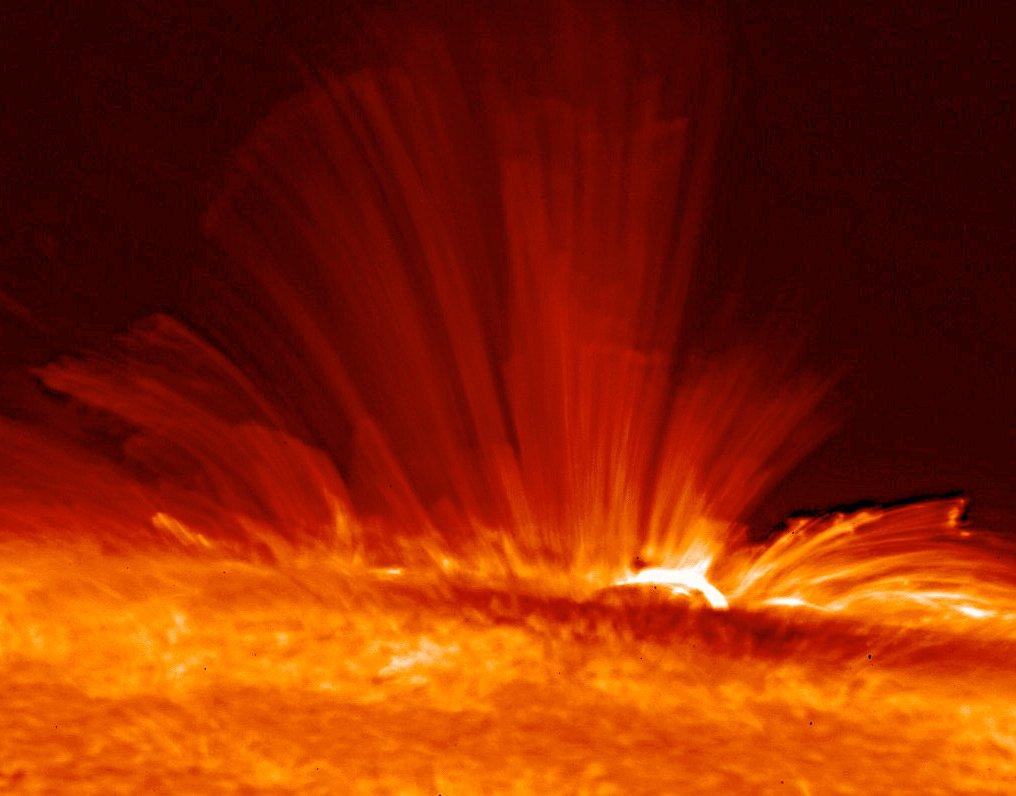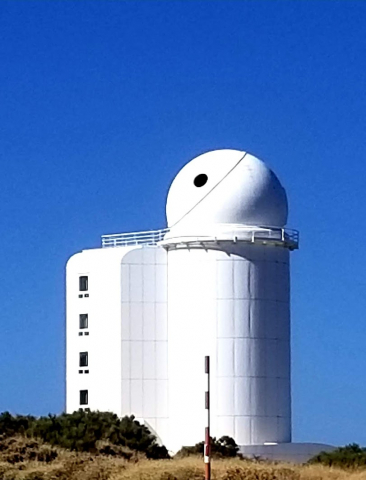 |
 |
|
Image credit: Hinode, JAXA/NASA |
THEMIS (Tenerife, Spain) |
Quiet Sun magnetic fields.
The quiet Sun is a highly turbulent plasma that exhibits a rich and complex magnetic structuring which is still not fully resolved nor understood. It has been shown recently that the magnetic flux of the quiet Sun is at least three orders of magnitude larger than the one of active regions. The amount of magnetic energy stored in quiet Sun magnetic structures is still unknown, but long standing questions on the physical origin of coronal heating and solar wind acceleration are probably related to magnetic mechanisms taking place in the quiet Sun.
In our group we use high resolution, high sensitivity spectropolarimetric observations from space (Hinode satellite) and ground (Themis telescope) to explore this essential aspect of the solar magnetism.
Hanle diagnostics of magnetic fields in solar prominences
Solar prominences are elongated structures of plasma observed in the low corona, denser and cooler than the corona, they stand in equilibrium thanks to magnetic forces acting against gravity. However some of them may become instable and give rise to Coronal Mass Ejections.
The determination of the magnetic fields in solar prominences relies on the interpretation of their Hanle effect on the linear polarization of spectral lines formed by scattering of photons in these objects which are illuminated by the underlying photospheric radiation.
Some of these lines are optically thick, multiple photon scattering must then be taken into account as it also modifies the line polarization. We have implemented an efficient numerical method to compute the linear polarization of such spectral lines affected by the Hanle effect and by multiple photon scattering in two-dimensional models of solar prominences with thread-like inhomogeneities and velocity fields.
Fourier analysis of quiet Sun magnetic structures
Spectral line polarization is used as a tracer of magnetic fields. The Fourier spectrum of the polarization spatial fluctuations in quiet Sun regions, recorded onboard the Hinode satellite allows us to analyze their magnetic structures.




